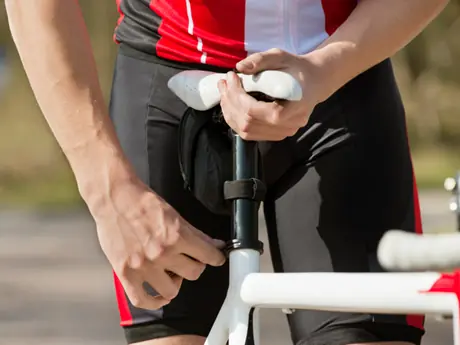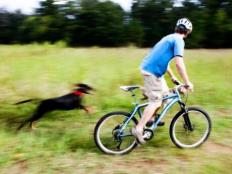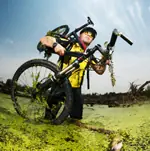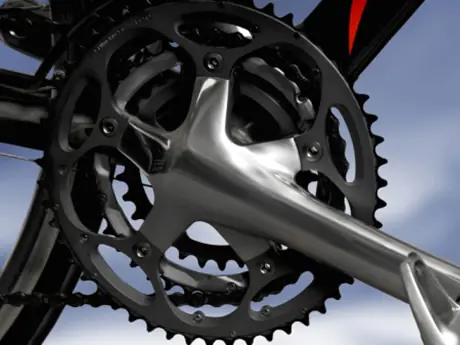Drill: On a loose surface uphill road or trail, make micro adjustments to your body position to determine the optimal narrow range for keeping your rear tire in contact with the ground. At what point does it begin to slip? Where do you achieve the greatest power output? Adjust your position accordingly.
Gentle Downhill
Your body position moves forward on uphills; on descents, your position moves back. To increase speed on hard-packed, gentle downhill sections of trail, you should lower your head and shoulders and keep your hips toward the back of the saddle.
Drill: Raise and lower your combined head and shoulder position to increase and decrease speed.
Steep Downhill
As the downhill section of trail gets steeper, it becomes more important to keep your body weight toward the back of the bike. On very steep terrain, expert riders will stand with their hips behind the saddle.
If your weight is too far forward on steep descents, you increase the risk of going over the handlebars and doing an "endo." This can happen if you hit an obstacle or apply the front brake too hard when your weight is too far forward.
More: 9 Cycling Tips for Better Hill Climbing
Drill: On a steep downhill, stand and move your hips towards your rear tire. Elbows, knees and shoulders should be slightly flexed and relaxed. This will allow your body to be a shock absorber. A stiff body makes it very difficult to control the bike.
Tip: Your right brake controls the rear and the left brake controls the front. On descents, control speed by "feathering" the brakes. This means gently applying the brakes and releasing. Repeat as many times as necessary. Control speed before you feel the need to squeeze the brakes to avoid a skid. Also know that too much force to the left brake can cause an endo. Too much force on the right brake can cause the rear wheel to fishtail from side to side.
Loose Downhill
Similar to going uphill, going downhill in loose gravel or dirt makes it harder to balance. There is less room for error.
Drill: If your trail has an unavoidable steep, loose downhill section, it's okay to walk until you build the skills and confidence to give it a shot. If the hill is tiered and it's possible to ride the lower portion first, do that. It's okay to break hills down into smaller, more manageable sections. Once you're comfortable with each section, you can try to ride the whole thing.
By building skills and confidence on easier trails, you will become a stronger mountain biker. Once you become more comfortable with balancing and shifting your weight on flats, uphill and downhill trail sections, you can begin to tackle tougher trails.
More: 23 Fun Facts You Didn't Know About the Tour de France
 Ready to ride? Search for a cycling event.
Ready to ride? Search for a cycling event.
- 2
- of
- 2
About the Author









Discuss This Article